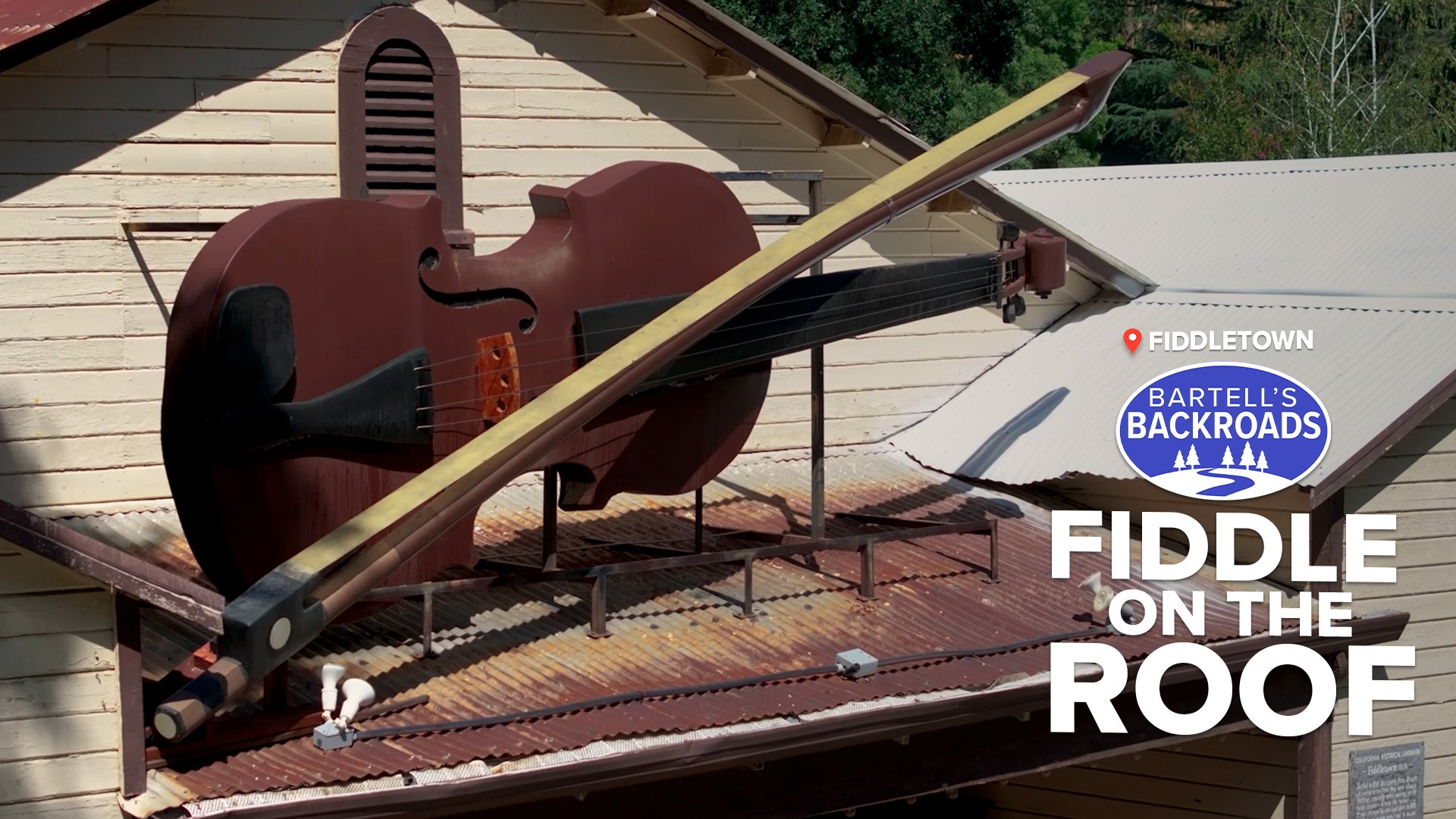FIDDLETOWN, Calif. — As you get deeper into Amador County’s Gold Country, the more likely it is that you will hear the sound of fiddles playing along one small town's main street. The stringed instruments are easy to find in the community of Fiddletown.
For the best experience, you may want to visit Fiddletown during the annual Fiddlers Jam in September. There is plenty of food, fun, and, of course, fiddle playing. If you are lucky, you might run into longtime resident Ronald Scofield.
Oddly, he plays the guitar, not the fiddle. The 92-year-old is a true cowboy. He and his wife settled down here 50 years ago after a 3,000-mile covered wagon trip.
“One of the better experiences in a person’s life. You get just a taste of what it was like for pioneers,” said Scofield.
Being the storyteller he is, Scofield loves to explain how Fiddletown got its name. According to him, it started with some gold miners from Missouri in the 1800s.
“Enough of them brought fiddles with them that when there was nothing to do they played the fiddle and sang around the fire,” said Scofield.
TAKE A TRIP ON BARTELL'S BACKROADS:
► See an interactive map of everywhere John has visited on the backroads
► Watch all of the Backroads videos
► Follow John on Facebook
Fast forward to today and you’ll find the fiddle playing never stopped, and that’s why they built a giant fiddle statue on top of the dance hall. Town historian Elaine Zorbas says at one time it was the world's largest fiddle, but a quick internet search reveals Nova Scotia, Canada, has a much bigger fiddle.
That doesn’t bother Fiddletown residents. They continue to maintain and repair the town icon.
“This one is made of fiberglass. The old one was made of wood and you know what happens with wood and weathering,” said Zorbas.
Speaking of weathering, many of the old wood buildings in Fiddletown have actually weathered quite well over time. That includes the old post office, the saloon and the general store, which makes some great handmade toffee.
Other than the giant fiddle, the main attraction in town is the Chew-Key Store Museum, which was once a general store, a pharmacy and a gambling hall that served a substantial Chinese population. Fiddletown was one of the few towns in the 1800s that allowed Chinese people to own property.
“It’s a time capsule of more than 100 years of Chinese residency,” said Zorbas.
More than 2,000 people lived in Fiddletown at its peak during the Gold Rush. Today just a few hundred remain. If you ask Ronald Scolfield, the ones who stayed were the good ones.
“It's just really nice to find a place that has really good people," he said.
MORE MUSIC ON THE BACKROADS: No radio needed on Lancaster's "Musical Road." Your tires play the tunes.

